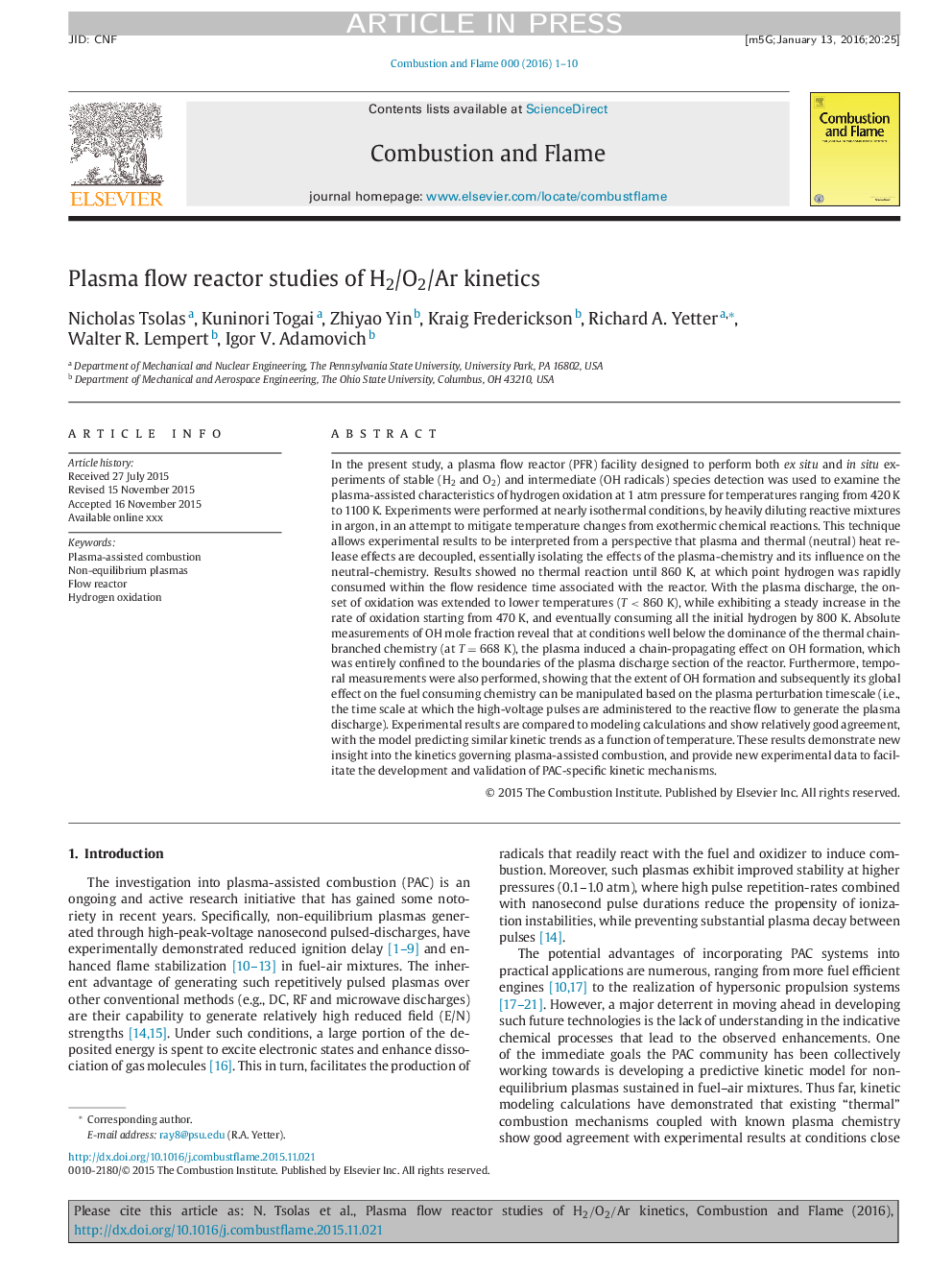| کد مقاله | کد نشریه | سال انتشار | مقاله انگلیسی | نسخه تمام متن |
|---|---|---|---|---|
| 6594187 | 457999 | 2016 | 10 صفحه PDF | دانلود رایگان |
عنوان انگلیسی مقاله ISI
Plasma flow reactor studies of H2/O2/Ar kinetics
دانلود مقاله + سفارش ترجمه
دانلود مقاله ISI انگلیسی
رایگان برای ایرانیان
کلمات کلیدی
موضوعات مرتبط
مهندسی و علوم پایه
مهندسی شیمی
مهندسی شیمی (عمومی)
پیش نمایش صفحه اول مقاله

چکیده انگلیسی
In the present study, a plasma flow reactor (PFR) facility designed to perform both ex situ and in situ experiments of stable (H2 and O2) and intermediate (OH radicals) species detection was used to examine the plasma-assisted characteristics of hydrogen oxidation at 1 atm pressure for temperatures ranging from 420Â K to 1100Â K. Experiments were performed at nearly isothermal conditions, by heavily diluting reactive mixtures in argon, in an attempt to mitigate temperature changes from exothermic chemical reactions. This technique allows experimental results to be interpreted from a perspective that plasma and thermal (neutral) heat release effects are decoupled, essentially isolating the effects of the plasma-chemistry and its influence on the neutral-chemistry. Results showed no thermal reaction until 860Â K, at which point hydrogen was rapidly consumed within the flow residence time associated with the reactor. With the plasma discharge, the onset of oxidation was extended to lower temperatures (T < 860Â K), while exhibiting a steady increase in the rate of oxidation starting from 470Â K, and eventually consuming all the initial hydrogen by 800Â K. Absolute measurements of OH mole fraction reveal that at conditions well below the dominance of the thermal chain-branched chemistry (at T = 668Â K), the plasma induced a chain-propagating effect on OH formation, which was entirely confined to the boundaries of the plasma discharge section of the reactor. Furthermore, temporal measurements were also performed, showing that the extent of OH formation and subsequently its global effect on the fuel consuming chemistry can be manipulated based on the plasma perturbation timescale (i.e., the time scale at which the high-voltage pulses are administered to the reactive flow to generate the plasma discharge). Experimental results are compared to modeling calculations and show relatively good agreement, with the model predicting similar kinetic trends as a function of temperature. These results demonstrate new insight into the kinetics governing plasma-assisted combustion, and provide new experimental data to facilitate the development and validation of PAC-specific kinetic mechanisms.
ناشر
Database: Elsevier - ScienceDirect (ساینس دایرکت)
Journal: Combustion and Flame - Volume 165, March 2016, Pages 144-153
Journal: Combustion and Flame - Volume 165, March 2016, Pages 144-153
نویسندگان
Nicholas Tsolas, Kuninori Togai, Zhiyao Yin, Kraig Frederickson, Richard A. Yetter, Walter R. Lempert, Igor V. Adamovich,